Related Research Articles

Year 1545 (MDXLV) was a common year starting on Thursday of the Julian calendar.

The Duchy of Parmaand Piacenza, was an Italian state created in 1545 and located in northern Italy, in the current region of Emilia-Romagna.

Ranuccio I Farnese reigned as Duke of Parma, Piacenza and Castro from 1592. A firm believer in absolute monarchy, Ranuccio, in 1594, centralised the administration of Parma and Piacenza, thus rescinding the nobles' hitherto vast prerogative. He is best remembered for the "Great Justice" of 1612, which saw the executions of a large number of Piacentine nobles suspected of plotting against him. Claudia Colla his mistress and her mother were accused of using witchcraft to stop him from having offspring, and both were sentenced to death by burning. Because one of the conspirators, Gianfrancesco Sanvitale, falsely implicated several Italian princes, namely Vincenzo Gonzaga, Duke of Mantua and Cesare d'Este, Duke of Modena, in the plot, Vincenzo and Cesare's names appeared on the list of conspirators during formal court proceedings; as a result, Ranuccio's reputation among the rulers of Italy was irreparably damaged because it was evident that he gave credence to Gianfrancesco's obviously false confession. When, consequently, in the early 1620s, Ranuccio was looking for a bride for his younger legitimate son and heir, Odoardo, none of the Italian ruling families were forthcoming with princesses.

The House of Farnese was an influential family in Renaissance Italy. The titles of Duke of Parma and Piacenza and Duke of Castro were held by various members of the family.

Vincenzo Ι Gonzaga was the ruler of the Duchy of Mantua and the Duchy of Montferrat from 1587 to 1612.
Torelli may refer to:
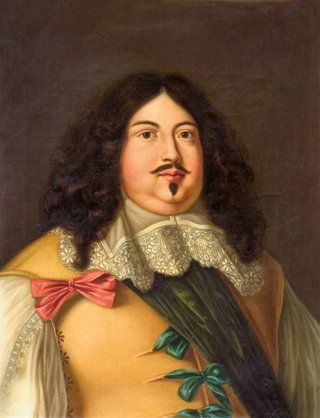
Odoardo Farnese, also known as Odoardo I Farnese to distinguish him from his grandson Odoardo II Farnese, was Duke of Parma, Piacenza and Castro from 1622 to 1646.

The (Princely) County of Tyrol was an estate of the Holy Roman Empire established about 1140. After 1253, it was ruled by the House of Gorizia and from 1363 by the House of Habsburg. In 1804, the County of Tyrol, unified with the secularised prince-bishoprics of Trent and Brixen, became a crown land of the Austrian Empire. From 1867, it was a Cisleithanian crown land of Austria-Hungary.
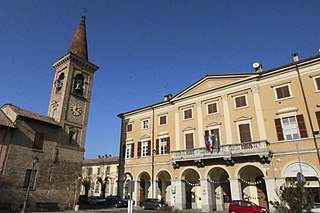
Casei Gerola is a comune (municipality) in the Province of Pavia, Lombardy, Italy. It is located about 60 kilometres (37 mi) southwest of Milan and about 25 kilometres (16 mi) southwest of Pavia.
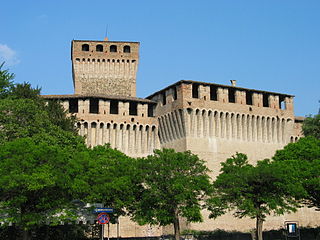
Montechiarugolo is a comune (municipality) in the Province of Parma in the Italian region Emilia-Romagna, located about 80 kilometres (50 mi) northwest of Bologna and about 13 kilometres (8 mi) southeast of Parma.

The County of Guastalla was a feudal state in northern Italy, centered on Guastalla. The title of count was created in 1406 for Guido Torelli.

A crown-cardinal was a cardinal protector of a Roman Catholic nation, nominated or funded by a Catholic monarch to serve as their representative within the College of Cardinals and, on occasion, to exercise the right claimed by some monarchs to veto a candidate for election to the papacy. More generally, the term may refer to any cardinal significant as a secular statesman or elevated at the request of a monarch.
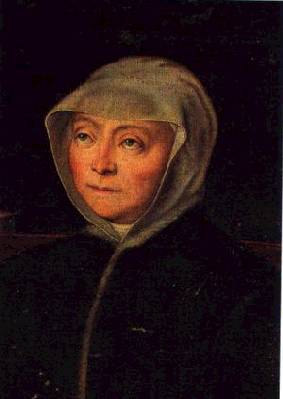
Ludovica Torelli was ruling Countess of Guastalla in 1522–1539. A philanthropist, she was instrumental in the founding of two religious institutes for woman: the Angelic Sisters of Saint Paul and the "Collegio della Guastalla"/"Daughters of Mary".

Pomponio Torelli was Count of Montechiarugolo and a writer of prose, poetry and plays. He is principally remembered for his five tragedies.
Giovanni Renesi was an Albanian military captain and mercenary. He was involved in the organization of spy networks in the Ottoman Empire in support of the Catholic powers of southern Europe and he participated in several plans for large-scale revolts against the Ottomans.

The Angelo Flavio Comneno or Angeli family were an Italian noble family of Albanian descent who claimed descent from the Angelos dynasty of the Byzantine Empire. In the 16th century, the family founded the Sacred Military Constantinian Order of Saint George, a knightly order with invented Byzantine connections. From the 16th century onwards, the heads of the family styled themselves as "Prince of Macedonia, Duke and Count of Drivasto and Durazzo", though other titles were also sometimes used.
Marco Angelo Flavio Comneno was according to the official reconstruction of the Sacred Military Constantinian Order of Saint George the grand master of the order from 1678 to 1679, though the historicity of his tenure as grand master has been questioned on the basis that he might in actuality have predeceased his supposed predecessor, his older brother Angelo Maria Angeli. Marco's family, the Angelo Flavio Comneno, claimed descent from the Angelos dynasty of Byzantine emperors. The modern Constantinian Order attributes Marco the titular titles previously used by his older brother; "Prince of Macedonia and Thessaly" and "Duke and Count of Drivasto and Durazzo".
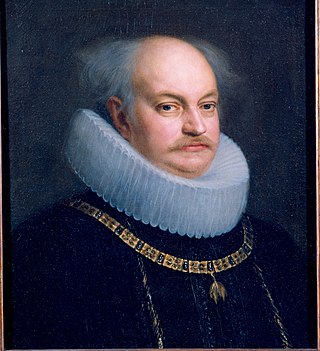
Alessandro I Pico della Mirandola was an Italian nobleman and military man, second Marquis of Concordia (1602–1637), second and last Prince of Mirandola (1602–1617) and first Duke of Mirandola (1617–1637).

Barbara Sanseverino was an Italian noblewoman.
References
- ↑ "MASI, Giovan Battista". Treccani (in Italian). Retrieved 2 November 2023.
- ↑ Everson, Jane E.; Reidy, Denis V.; Sampson, Lisa (14 April 2016). The Italian Academies 1525-1700: Networks of Culture, Innovation and Dissent (in English and Italian). Routledge. p. 63. ISBN 978-1-317-19630-3.